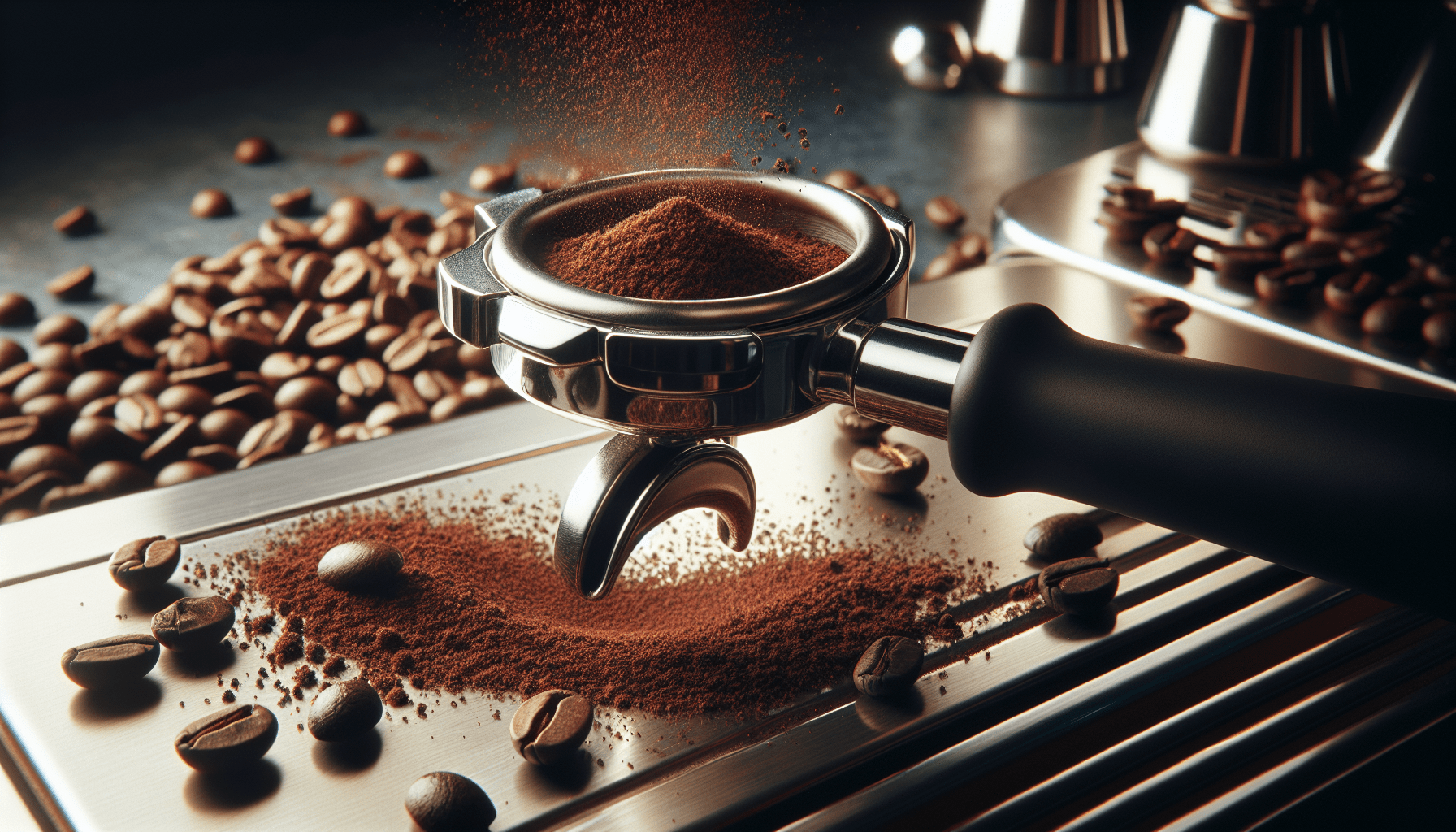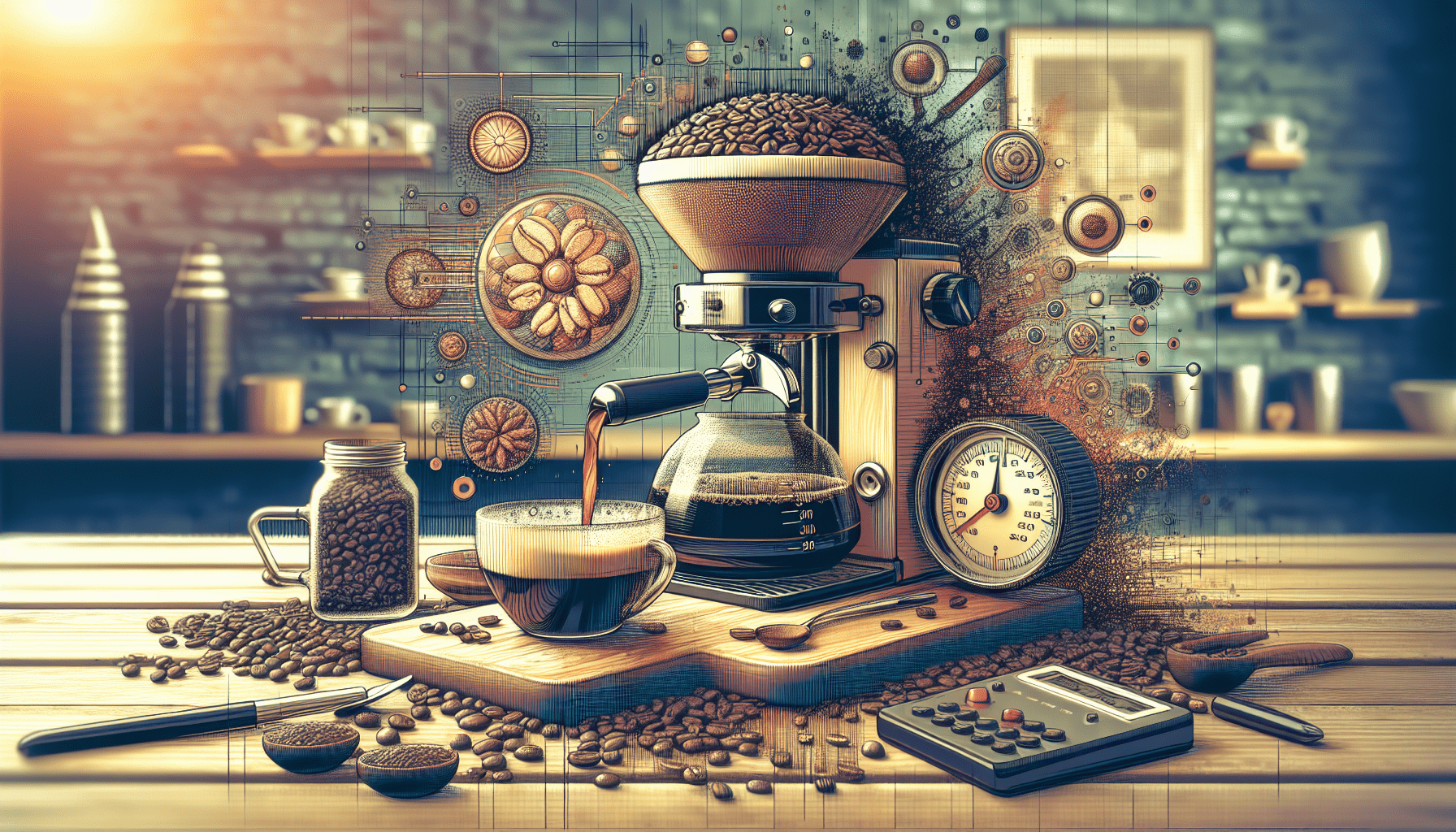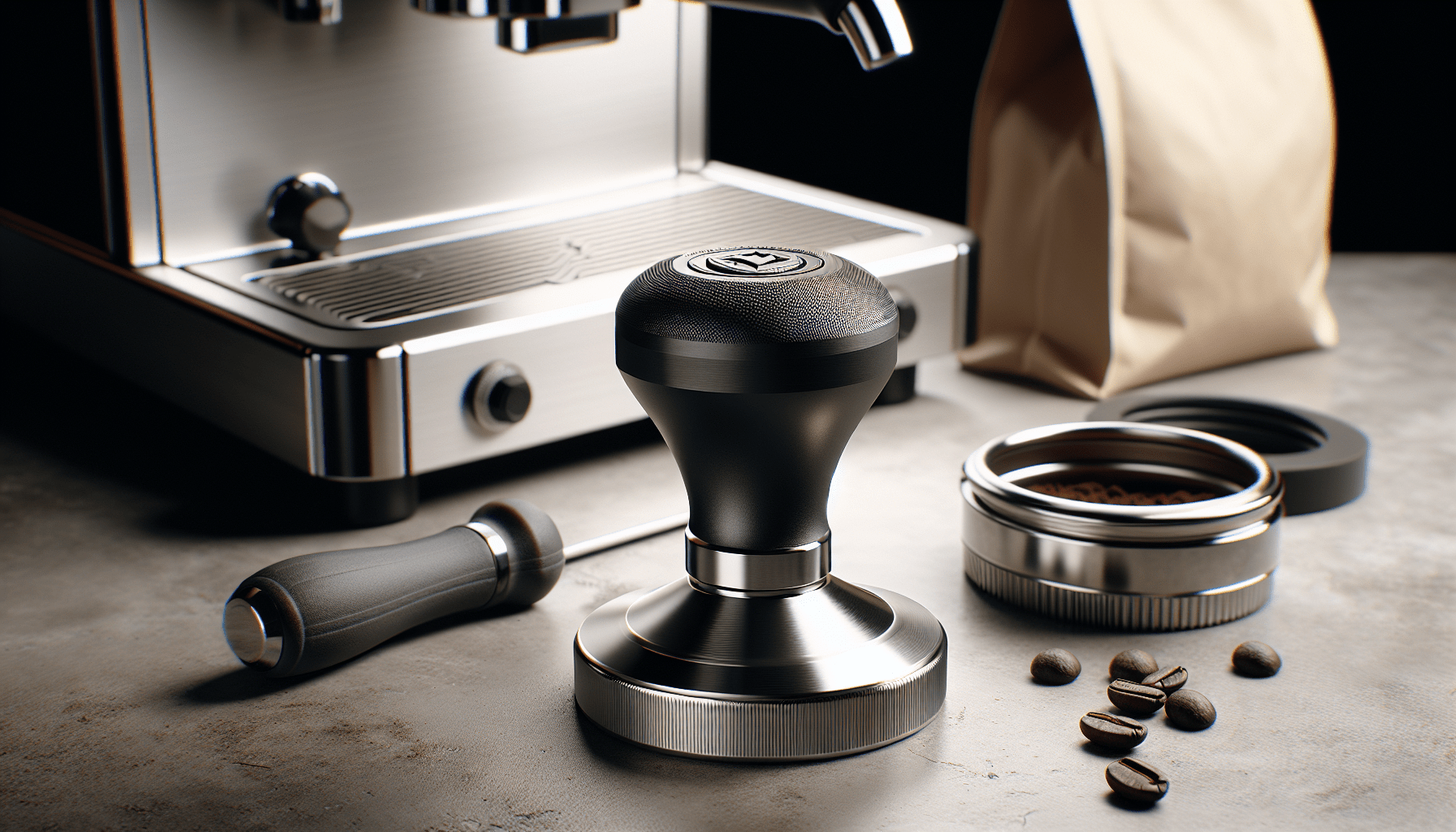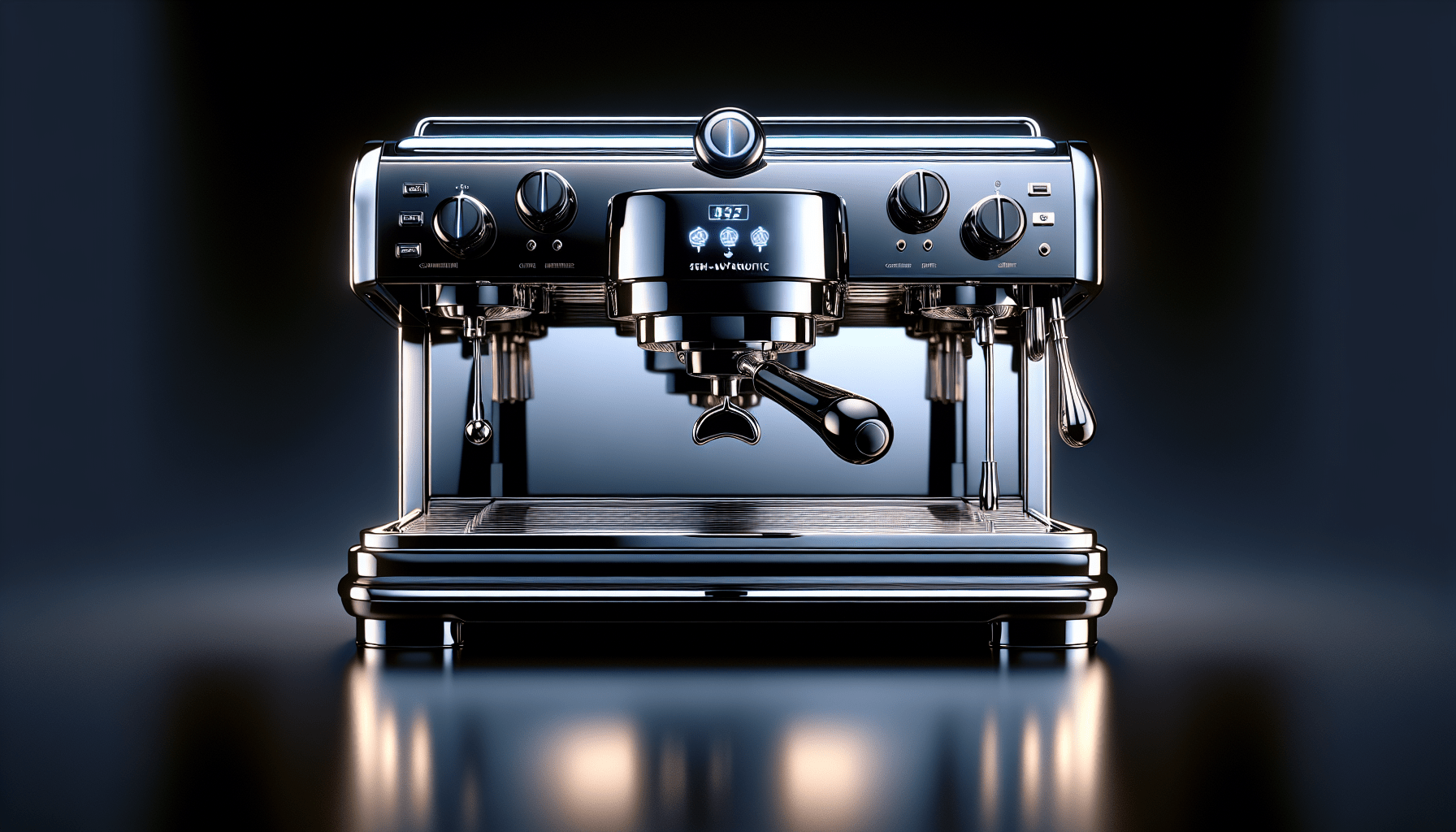Have you ever wondered how long it takes to brew that perfect shot of espresso with a semi-automatic machine? Well, the answer might surprise you. With the touch of a button and a few simple steps, you can have a rich, aromatic cup of espresso in just a matter of minutes. In this article, we’ll explore the process and break down the time it takes to brew that perfect shot, so you can enjoy your coffee break with confidence and without any unnecessary delays. So, grab your favorite mug and let’s dive into the fascinating world of semi-automatic espresso machines.
Understanding the Basics of Espresso Brewing
Espresso brewing is an art that requires precision and careful attention to detail. To master the art of brewing espresso, it is essential to understand the various components that make up a semi-automatic espresso machine, the role of pressure in espresso extraction, and the importance of grind size and consistency.
The Components of a Semi-Automatic Espresso Machine
A semi-automatic espresso machine consists of several key components that work together to brew a perfect shot of espresso. These components include a water tank, a boiler, a portafilter, a group head, and a pump. The water tank provides the machine with the necessary water for the brewing process, while the boiler heats the water to the desired temperature. The portafilter is where you place the ground coffee and attach it to the group head, which is responsible for extracting the espresso. The pump helps to create the pressure required for the extraction process. Understanding the function of each component is crucial in achieving consistent and delicious espresso.
The Role of Pressure in Espresso Extraction
Pressure plays a vital role in the extraction of espresso. When brewing espresso, water is forced through the compacted coffee grounds under high pressure, causing the extraction process to occur. The ideal pressure for espresso extraction is typically around 9 bars, as this level of pressure ensures that the flavors and aromas are extracted from the coffee grounds without over-extraction. Understanding how pressure affects the extraction process is essential for achieving balanced and flavorful shots of espresso.
The Importance of Grind Size and Consistency
Grind size and consistency are critical factors in the brewing process. The grind size determines the rate of extraction, with finer grinds extracting more quickly and coarser grinds taking longer. Consistency in grind size is crucial for even extraction and preventing under or over-extraction. A consistent grind size ensures that the water contacts the coffee particles evenly, leading to a balanced and flavorful shot of espresso. It is important to experiment with different grind sizes and adjust accordingly to achieve the desired taste.
Preparation Time
Preparing your espresso machine and equipment properly is essential for a successful brewing process. Taking the time to preheat the machine, warm up the portafilter and shot glass, and check the water temperature ensures that everything is ready to go when it comes time to pull your shot.
Preheating the Espresso Machine
Preheating the espresso machine is necessary to maintain stability in temperature during the brewing process. To preheat the machine, turn it on and allow it to run for at least 15-20 minutes before brewing. This allows the boiler to heat up fully and ensures that the water temperature remains consistent throughout the brewing process.
Warming Up the Portafilter and Shot Glass
Warming up the portafilter and shot glass helps to maintain the temperature of the espresso during extraction. Place the portafilter in the group head of the machine for a few seconds to warm it up. Similarly, warm up the shot glass by running hot water over it or placing it on top of the espresso machine. By preheating these components, you ensure that the coffee does not lose heat during extraction, resulting in a more flavorful and enjoyable cup of espresso.
Filling the Water Tank and Checking Water Temperature
Before brewing espresso, it is important to fill the water tank of your espresso machine and ensure that the water temperature is in the optimal range. Fill the water tank with fresh, cold water, making sure not to overfill it. Check the water temperature using a thermometer or the built-in temperature display on your machine. The ideal water temperature for brewing espresso is typically between 195°F and 205°F (90°C-96°C). Adjust the temperature if necessary to achieve the desired result.
Grinding the Coffee and Tamping
The process of grinding the coffee and tamping it into the portafilter is crucial for achieving a proper extraction and flavorful espresso. Paying attention to the selection of coffee beans, adjusting the grinder settings, and ensuring proper dosing and distribution can greatly impact the quality of your shot.
Selecting the Right Coffee Beans
Choosing the right coffee beans is essential for brewing a delicious shot of espresso. Look for freshly roasted beans from reputable coffee roasters and consider the flavor profile you prefer. Some beans are specifically roasted for espresso and can enhance the taste and aroma of your brew. Experiment with different coffee beans to find the ones that suit your taste preferences.
Adjusting the Grinder to the Desired Grind Size
Grind size plays a crucial role in the extraction process. Espresso requires a fine grind size to ensure optimal extraction. Adjust the grinder settings to achieve the desired grind size, keeping in mind that different beans and brewing methods may require slight adjustments. It is important to note that different grinders may have different scales, so it may take some trial and error to find the perfect setting.
Dosing and Distributing the Ground Coffee
Once you have ground your coffee to the desired size, it is time to dose and distribute it evenly in the portafilter. Use a scale to measure the correct amount of coffee for your shot and ensure consistency in dosing. After dosing, distribute the coffee grounds evenly in the portafilter by gently tapping or using a distribution tool. This helps to ensure an even extraction and prevents channeling, which can lead to an uneven extraction and off-flavors.
Tamping the Coffee to Ensure Proper Extraction
Tamping is the process of applying pressure to the coffee grounds in the portafilter. Use a tamper to firmly press down on the grounds, creating an even surface. The tamper should be level and perpendicular to the portafilter to ensure an even tamp. Applying consistent tamp pressure is crucial to prevent any inconsistencies in extraction. A properly tamped coffee bed allows for the water to flow evenly through the coffee grounds, resulting in a flavorful and well-balanced shot of espresso.
Shot Extraction Process
Now that your coffee is properly prepared, it is time to extract the shot. This process involves locking the portafilter into the espresso machine, activating the pump, monitoring extraction time, and observing the flow and color of the espresso.
Locking the Portafilter into the Espresso Machine
Start by locking the portafilter into the espresso machine’s group head. Make sure it is secured tightly to prevent any leaks during extraction. Once locked, ensure that the spouts are facing down to direct the flow of espresso into your cup.
Activating the Pump and Starting Shot Extraction
After securing the portafilter, it is time to activate the pump and start the shot extraction. Depending on your espresso machine, this may involve pressing a button or flipping a switch. The pump generates the necessary pressure to force the water through the coffee grounds. It is important to note the start time of the extraction.
Monitoring the Espresso Extraction Time
The extraction time refers to the duration it takes for the espresso to flow from the portafilter into the cup. The ideal extraction time for a single shot of espresso is typically between 20-30 seconds. Monitoring the extraction time allows you to make adjustments if necessary. If the extraction time is too short, it may result in an under-extracted and weak shot. Conversely, if the extraction time is too long, it may lead to over-extraction and a bitter taste.
Observing the Flow and Color of the Espresso
As the shot is being extracted, take note of the flow and color of the espresso. The espresso should form a steady and even stream, resembling honey flowing from the portafilter. The color should be dark and rich, with a crema layer on top. A well-extracted shot will have a balanced flavor and aroma. If the flow is too fast or too slow, it may indicate an issue with the grind size or tamp pressure, and adjustments may be necessary.
Shot Volume and Double Shot
When brewing espresso, it is important to determine the desired shot volume and manage double shot extraction properly. Adjusting the grind size, extraction time, and understanding the factors that affect brewing time are key to achieving consistent results.
Determining the Desired Shot Volume
The shot volume refers to the amount of espresso extracted from the portafilter. The standard shot volume for a single shot of espresso is typically around 1 ounce (30ml). However, personal preferences may vary, and some may prefer a larger or smaller shot volume. It is essential to determine the desired shot volume before brewing and adjust the grind size and extraction time accordingly.
Managing Double Shot Extraction
A double shot of espresso refers to a larger serving size with twice the amount of coffee grounds. When brewing a double shot, it is important to ensure an even extraction. This can be achieved by adjusting the grind size and extraction time to accommodate the increased coffee volume. It is crucial to maintain consistency and balance in the extraction process to prevent any over or under-extraction.
Adjusting Grind Size and Extraction Time for Double Shot
When brewing a double shot of espresso, it may be necessary to adjust the grind size and extraction time. The increased coffee volume requires more contact time with the water for proper extraction. As a general rule, coarsening the grind size slightly and lengthening the extraction time can help achieve a balanced double shot. However, it is important to monitor the extraction and make adjustments as needed to ensure optimal results.
Factors Affecting Brewing Time
Several factors can impact the brewing time of espresso. Understanding these factors and how they interact can help you achieve consistent brewing results.
The Grind Size and Consistency
The grind size and consistency are crucial factors that determine the rate of extraction. Finer grinds extract more quickly, while coarser grinds take longer. It is important to experiment with different grind sizes to achieve the desired taste and adjust accordingly. Consistency in grind size is also important for even extraction and preventing under or over-extraction.
The Coffee-to-Water Ratio
The coffee-to-water ratio refers to the amount of coffee used in relation to the amount of water. Adjusting the ratio can impact the brewing time and the strength of the espresso. A higher coffee-to-water ratio generally results in a stronger and more intense shot, while a lower ratio can produce a milder and more balanced cup. It is important to find the right balance for your taste preferences.
The Tamp Pressure
The tamp pressure, or the pressure applied when tamping the coffee grounds, can affect the brewing time. A lighter tamp may result in a faster extraction, while a heavier tamp can slow down the process. It is important to maintain consistency in tamp pressure to achieve consistent results.
Water Temperature and Pressure
The water temperature and pressure play a significant role in the extraction process. The ideal water temperature for brewing espresso is typically between 195°F and 205°F (90°C-96°C). Adjusting the water temperature can impact the brewing time and the flavor profile of the espresso. Similarly, adjusting the pressure can also affect the extraction process, with higher pressure resulting in a faster extraction.
Shot Volume and Desired Strength
The desired shot volume and strength can impact the brewing time. A larger shot volume may require a longer extraction time, while a smaller shot may extract more quickly. The desired strength of the espresso can also influence the brewing time, with a stronger shot often requiring a longer extraction.
Average Brewing Time
The brewing time for espresso can vary depending on various factors. While the standard extraction time for a single shot of espresso falls within the range of 20-30 seconds, it is important to note that brewing time can be influenced by factors such as grind size, coffee-to-water ratio, tamp pressure, water temperature, shot volume, and desired strength. By adjusting these variables, you can customize your brewing time to achieve the desired taste and flavor profile.
Time Range for Espresso Brewing
On average, the brewing time for a shot of espresso can range from as little as 20 seconds to as long as 35 seconds. However, it is important to note that the extraction time is not the sole indicator of a perfect shot. The flavor, aroma, and overall balance of the espresso should also be taken into consideration. It may require some experimentation and adjustments to find the ideal brewing time for your preferences.
Factors That Impact Brewing Time
The brewing time for espresso can be impacted by several factors, as mentioned earlier. Grind size, coffee-to-water ratio, tamp pressure, water temperature, shot volume, and desired strength can all play a role in determining the brewing time. It is important to understand how these factors interact and how they can be adjusted to achieve the desired brewing time and flavor profile.
Tips for Faster Brewing
If you are looking to brew your espresso faster, there are several tips and techniques that can help optimize the process without compromising the quality of your shot.
Preheating Equipment and Warming Cups
One way to speed up the brewing process is by preheating your equipment. Preheat your espresso machine by running it for at least 15-20 minutes before brewing. This will ensure that the machine is at the optimal temperature for extraction. Additionally, warming your cups by running hot water over them can help maintain the temperature of your espresso, allowing for a quicker brewing process.
Using a High-Quality Grinder
Investing in a high-quality grinder can significantly speed up the brewing process. A grinder with consistent grind size and quick grinding capabilities can save you valuable time. Look for grinders with powerful motors and precise grind settings to achieve faster and more efficient grinding.
Optimizing Coffee Dosage and Distribution
Proper coffee dosage and distribution can contribute to a faster brewing process. Using the correct amount of coffee and distributing it evenly in the portafilter can help ensure a more even extraction. This can lead to a quicker flow of espresso and a faster overall brewing time.
Maintaining Proper Tamp Pressure
Consistency in tamp pressure is crucial for a well-balanced extraction. However, applying excessive pressure can slow down the brewing process. It is important to find the right balance and maintain consistent tamp pressure to achieve optimal results without prolonging the brewing time.
Adjusting Extraction Variables
Experimenting with extraction variables can help achieve a faster brewing time. Adjusting the grind size, coffee-to-water ratio, and shot volume can all impact the extraction process. However, it is important to monitor the quality and taste of the espresso as you make these adjustments to ensure that the flavor profile remains balanced and enjoyable.
Cleaning and Maintenance
Proper cleaning and maintenance of your espresso machine and equipment are essential for optimal performance and longevity. Regular cleaning, descaling to remove mineral deposits, and proper storage and care of the equipment can help prolong its lifespan and ensure consistently delicious espresso.
Regular Cleaning of the Espresso Machine
Regular cleaning is crucial to prevent any buildup of coffee residue and oils that can affect the taste and quality of your espresso. Follow the manufacturer’s instructions for cleaning your specific espresso machine. This may involve backflushing the group head, cleaning the shower screen, and wiping down the exterior of the machine. Clean the portafilter and other removable parts regularly to remove any coffee grounds or oils.
Descale the Machine to Remove Mineral Deposits
Over time, mineral deposits from the water used in your espresso machine can build up and affect its performance. Descaling is the process of removing these deposits to maintain optimal water flow and temperature. Follow the manufacturer’s instructions for descaling your specific machine, using a descaling solution suitable for espresso machines. Regular descaling will help keep your machine running smoothly and extend its lifespan.
Proper Storage and Care of the Equipment
When not in use, it is important to store your espresso machine and equipment properly. Make sure to empty and clean the portafilter, dispose of any used coffee grounds, and wipe down the machine to prevent any buildup or damage. Store the equipment in a clean and dry area, away from excessive heat or moisture. Proper care and storage will help maintain the functionality and appearance of your espresso machine.
Conclusion
Brewing a shot of espresso with a semi-automatic machine requires an understanding of the various components, the role of pressure in extraction, and the importance of grind size and consistency. Taking the time to properly prepare the equipment, grind the coffee, and execute the shot extraction process is instrumental in producing delicious and balanced espresso. Factors such as shot volume, desired strength, and brewing time can be adjusted to suit individual preferences. With consistency and practice, you can master the art of brewing espresso and enjoy the fruits of your effort in the form of a perfect cup of espresso.




